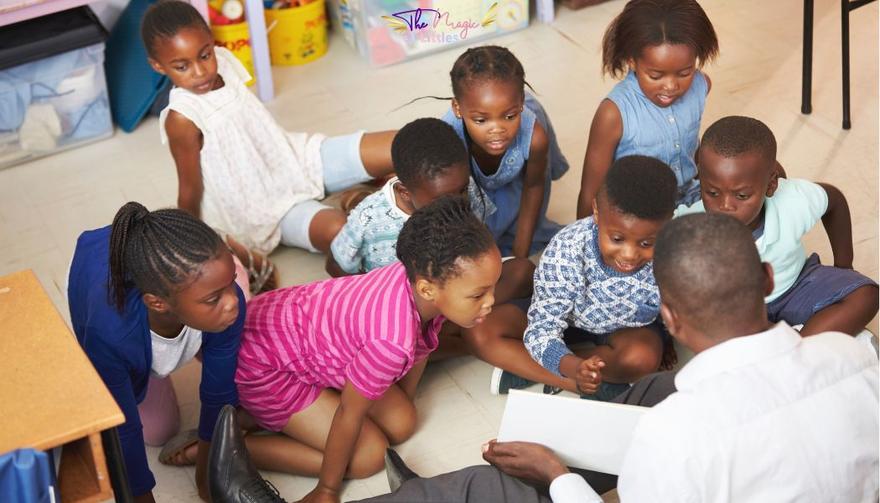
Alright, let’s get straight to it—Is it too early to talk to young children about race? It’s a big question that gets tossed around a lot, and while some might shy away from the topic, we need to face the fact: no, it’s never too early.
Here’s the thing, race doesn’t need to be this awkward, uncomfortable subject that we push to the side. It’s a critical part of the world we live in and a conversation we need to have with our kiddos as early as possible. So, buckle up, friends—we're diving in!
The Fear of Talking About Race
Let’s be real for a second: a lot of us get uncomfortable talking about race. And that’s okay, it’s a big, serious topic. But guess what? Ignoring it won’t make it go away.
In fact, avoiding the topic of race can actually do more harm than good. Why? Because when we act like race doesn’t matter or isn’t something we should talk about, we end up leaving kids of color without the support and understanding they need. If we keep quiet, we’re not teaching them the empathy and inclusion they need to navigate the world.
So instead of avoiding the topic, let’s dive in and learn how to make this conversation a part of our everyday lives!
Why Kids Are Ready to Talk About Race (Like, Yesterday)
Here’s a surprising truth: kids notice race really early on. By the time they’re around 4 or 5, they’re already picking up on differences based on their surroundings, their experiences, and what they see in the world. If we ignore these observations, we’re missing out on a chance to help them understand those differences in a healthy, inclusive way.
Children as young as 3 years old begin to make sense of who they are in relation to others. So, if we don’t address race head-on, kids might develop misconceptions or biases that could stick with them. That's why it’s important for us—as parents and teachers—to step up and start these conversations as early as possible.

Let’s Get Real About Talking Race with Littles
You’re probably thinking, “Okay, but HOW do I talk to young children about this?” Don’t worry, we’ve got you covered! Here’s a simple guide to get started:
- Use Simple Language: Don’t overcomplicate it! Use words like “skin color” or “everyone’s different” that kids can understand. You don’t need to turn this into a TED Talk.
- Diverse Books and Toys: Sure, books and toys aren’t the end-all-be-all, but they definitely help! The more kids see characters of all races in their stories and playtime, the more they’ll begin to understand that everyone is different—and that’s okay!
- Ask Open-Ended Questions: Encourage kids to ask questions, and then talk it through with them. If they say, “Why is their skin brown?” that’s a perfect opportunity to guide them in a way that makes them feel heard and understood.
- Keep It Casual: These talks don’t need to be a one-time thing. Incorporate race conversations in a natural way—whether it’s during storytime or in the middle of playtime. The more natural it feels, the easier it is for kids to process.
A Personal Story: Why This Stuff Really Matters
I’ve got a story for you. I was about 5 years old when I first learned about racism. How? Well, I was cornered by my kindergarten classmates after picture day because my hair was curly and “messy,” unlike theirs. I remember feeling confused and hurt. But instead of ignoring it, my parents had a real conversation with me about racism and differences.
That conversation stuck with me. And now, looking back, I realize how important it was that I had that talk early. It shaped my understanding of myself and others, and that’s exactly what we want for today’s kiddos. By having these talks early, we give children the foundation to grow up empathetic, inclusive, and ready to embrace diversity.
Teachers and Parents: We’ve Got Work to Do!
As teachers and parents, we’ve got a big role to play in making sure these conversations happen. Teachers, you’ve got a golden opportunity to shape how kids think about race in a way that’s gentle, kind, and meaningful. It’s not about making kids feel uncomfortable—it’s about giving them the tools to understand each other and the world around them.
And parents, don’t think you’re off the hook! You’re just as important in this process. Use your own life experiences and those hard conversations to keep the momentum going at home. It’s not about being perfect, it’s about being consistent and brave enough to have these important talks.
Books and Toys Aren’t the Whole Picture
Okay, so we love diverse books and toys, but let’s be real for a second—play and conversation are the real game-changers here. These tools might help, but they’re just one piece of the puzzle. What really matters is how we engage with kids, listen to their questions, and validate their feelings.
It’s not about a one-time conversation—it’s about making race a normal, ongoing topic that kids feel comfortable talking about. We want them to feel like it’s just part of life, not something that’s taboo or off-limits.
Wrap-Up: Start Talking!
So, let’s take a deep breath and dive in. It’s not too early to talk to young children about race. In fact, it’s probably the best time to start. The earlier we have these conversations, the more understanding and empathy we’re building for the future.
No need to be perfect. Just start somewhere. We’re all in this together, and the more we talk about race, the more our kids will grow into kind, inclusive, and thoughtful humans. So, let’s get started—today.
Take the next step! Play is one of the best ways to help kids understand big topics like race. Learn how in Episode #14: Using Play to Address Big Topics.


Comments